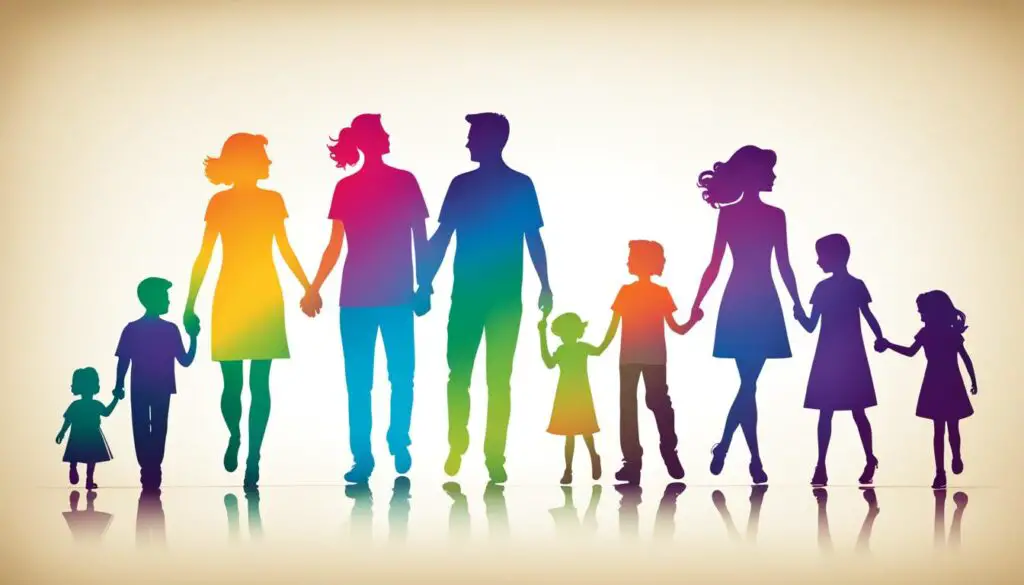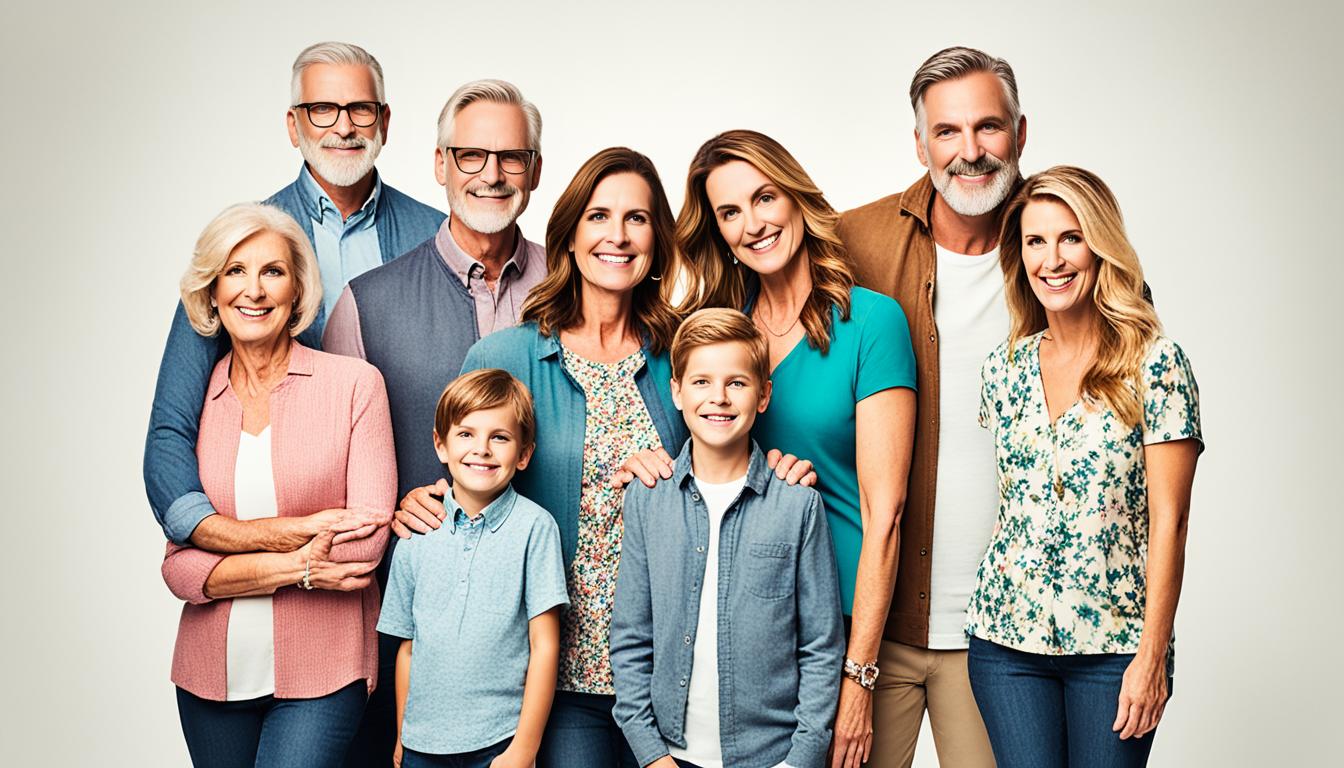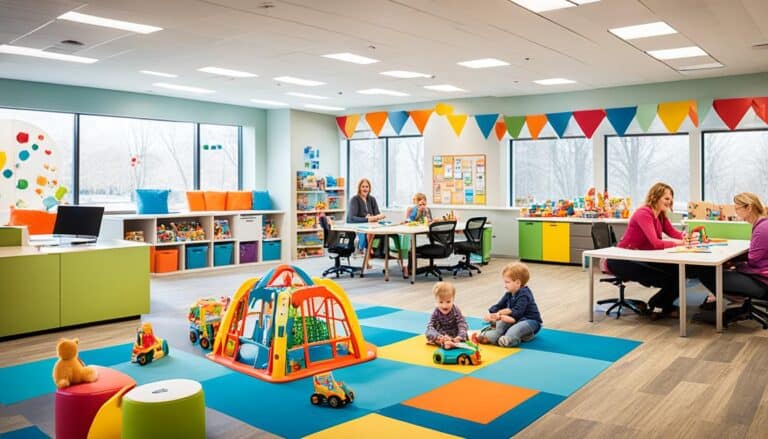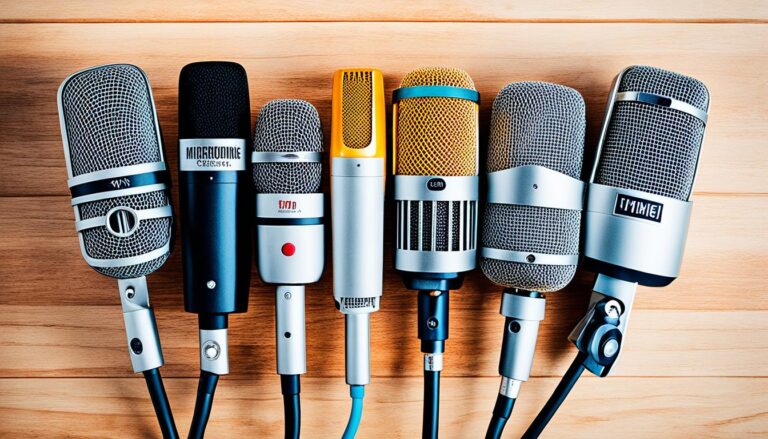Defining the 21st Century: What Modern Family Structures Look Like
The concept of modern family structures has undergone significant changes in the 21st century, reshaping relationships and society as we know it. As a professional copywriting journalist, I have closely observed this transformation through a personal lens, recognizing the diverse ways in which families are now formed and function in our modern world.
Modern family structures encompass a wide range of arrangements, challenging the traditional notion of what a family should be. In today’s society, families are no longer confined to the outdated idea of a nuclear family. Instead, they can take on various forms, reflecting the diversity of individuals and their relationships.
These modern family structures have a profound impact on relationships and society at large. They illustrate the shifting dynamics and values that shape our social fabric. By embracing and understanding these evolving structures, we can build stronger connections and a more inclusive society.
Key Takeaways:
- Modern family structures have evolved in the 21st century, reshaping relationships and society.
- Families today come in diverse forms, challenging traditional notions of what a family should be.
- The acceptance and understanding of modern family structures contribute to a more inclusive society.
- Modern family structures reflect the changing dynamics and values of our society.
- By embracing these evolving structures, we can build stronger connections and relationships.
The Evolution of Modern Family Structures
Traditional family structures have undergone significant changes over time, reflecting the evolving norms and values of society. In the 21st century, non-traditional family arrangements have become increasingly common, leading to more diverse and inclusive societies.
Modern family structures encompass a wide range of relationships and households that go beyond the traditional notion of a nuclear family. These structures include:
- Same-sex couples: With increased acceptance and legal recognition, same-sex couples have formed families and established loving homes.
- Cohabiting partners: Many couples choose to live together without getting married, creating long-term committed relationships outside the bounds of marriage.
- Blended families: As divorce rates have risen, more families consist of stepparents, stepchildren, and half-siblings, blending multiple family units into one.
- Single-parent households: Parents who raise children on their own face unique challenges, but also build strong connections and provide stable environments.
- Multigenerational households: In some cultures, it is common for several generations to live together, fostering close relationships and support networks.
These non-traditional family structures challenge the conventional definition of family and embrace the diversity of relationships and household arrangements in today’s society. By recognizing and accepting different family structures, communities become more inclusive and welcoming to individuals from all walks of life.
“The evolution of family structures reflects the changing societal norms and values, leading to a more inclusive and accepting society.”
As society continues to evolve, it is essential to appreciate and celebrate the diversity of modern family structures. By doing so, we create environments where individuals feel valued and supported, regardless of their familial circumstances.

| Traditional Family Structure | Modern Family Structure |
|---|---|
| Nuclear Family consisting of married parents and their biological children | Blended Family with stepparents, stepchildren, and half-siblings |
| Stay-at-home parent and working parent | Single-parent Household or dual-working parents |
| Heterosexual couples | Same-sex couples |
Impact of Modern Family Structures on Relationships and Society
Modern family structures have had a profound impact on relationships and society. By embracing diverse family arrangements, societies have become more accepting and inclusive. Individuals in modern family structures often have a strong support system, whether it be from extended family or chosen family members.
Additionally, these structures have contributed to new social dynamics, such as co-parenting, shared custody, and unconventional parenting roles. The recognition and acceptance of various family structures have fostered a sense of diversity and strengthened the social fabric of communities.

Having a visual representation of the impact of family structures can help illustrate the various relationships and dynamics involved. It highlights the interconnectedness and interdependence within families, showcasing the different roles that each member contributes to the overall well-being of the unit.
“Family is not defined by blood. It’s about who loves you, who supports you, and who accepts you for who you are.”
– Maya Angelou
This quote from Maya Angelou encapsulates the essence of modern family structures. It emphasizes the importance of love, support, and acceptance within families, regardless of their composition. Modern family structures have broken free from societal norms and paved the way for a more inclusive and diverse society.
Impact on Relationships
The impact of modern family structures on relationships cannot be overstated. These structures have created new avenues for connection and support, allowing individuals to form strong bonds regardless of traditional familial ties. Whether it’s through blended families, cohabitation, or chosen families, these relationships provide a sense of belonging and stability.
Impact on Society
The acceptance and recognition of diverse family structures have had a ripple effect on society. By challenging traditional norms and embracing diversity, communities have become more understanding and inclusive. This acceptance translates into a more compassionate and supportive society, where individuals can live authentically and without judgment.
Strengthening Social Dynamics
Modern family structures have revolutionized social dynamics, redefining traditional roles and responsibilities. Co-parenting, shared custody, and unconventional parenting roles have become more prevalent, allowing individuals to share the joys and challenges of raising children while maintaining healthy relationships.
| Impact | Examples |
|---|---|
| 1. Increased acceptance | – Same-sex couples raising children – Blended families with step-parents and step-siblings |
| 2. Diverse perspectives | – Multigenerational households fostering intergenerational learning – Cultural exchange within international families |
| 3. Nurturing emotional bonds | – Chosen families supporting LGBTQ+ individuals – Adoptive families providing love and care to children in need |
As the table above illustrates, the impact of modern family structures extends far beyond the individuals directly involved. It enriches society by promoting acceptance, diversity, and love.
Conclusion
In the 21st century, modern family structures have undergone significant transformations, ushering in diverse relationships and reshaping society as a whole. The evolution of family structures in response to changing societal norms and values has led to a more inclusive and accepting society.
Modern family structures have had a profound impact on the dynamics of relationships and communities. By recognizing and embracing the various forms these structures can take, society has become enriched and diverse. The understanding and acceptance of modern family structures contribute to the creation of a more inclusive and harmonious 21st-century society.
As we continue to navigate this era, it is crucial to celebrate and support the diverse ways in which families are formed and nurtured. Moving forward, promoting acceptance, respect, and appreciation for modern family structures will strengthen our social fabric, foster deeper connections, and create a society that truly embraces the richness of diversity.
FAQ
What is considered a modern family structure in the 21st century?
Modern family structures in the 21st century can include same-sex couples, cohabiting partners, blended families, single-parent households, and multigenerational households.
How have modern family structures impacted relationships?
Embracing diverse family arrangements has led to stronger support systems and new social dynamics, such as co-parenting, shared custody, and unconventional parenting roles.
What effect have modern family structures had on society?
By recognizing and accepting various family structures, society has become more diverse, accepting, and inclusive, strengthening the social fabric of communities.






